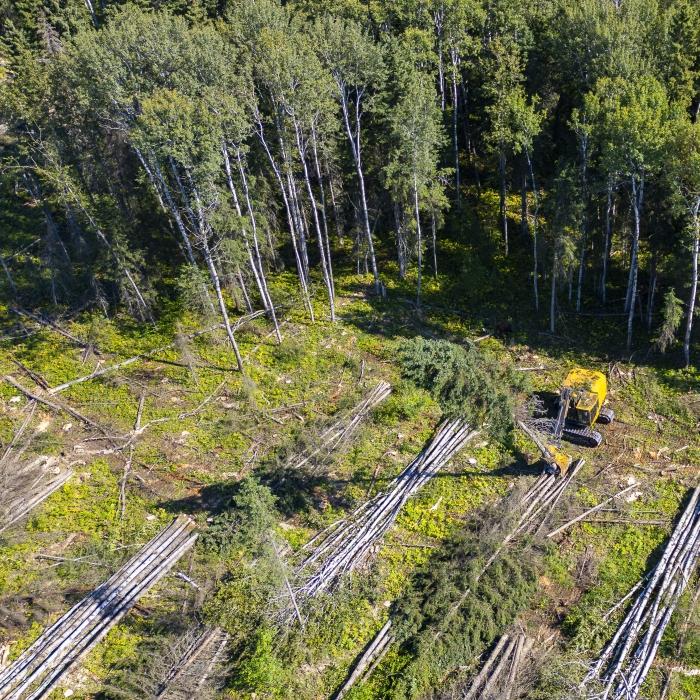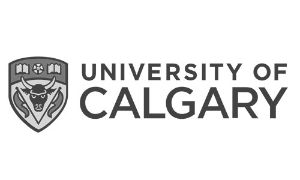Introduction
Overview of contents in this report, including a summary of the indicators assessed for Tolko's Southern Operating Area.
In this preliminary status report, baseline conditions for land cover and biodiversity are described for Tolko's Southern Operating Area, located in north-central Alberta.
Assessed indicators include:
- status and trend of human footprint and vegetation types,
- summary of land base change with a spotlight on the 2023 wildfires, interior native habitat, and linear footprint,
- status of several taxonomic groups: birds, mammals, soil mites, vascular plants, mosses, and lichens,
- species of conservation concern and non-native vascular plants, and
- spotlights on three species of management interest—Moose, Woodland Caribou, and Arctic Grayling.
Introduction
Tolko Industries Ltd. (hereafter Tolko) requested that the Alberta Biodiversity Monitoring Institute (ABMI) evaluate the status of land cover and biodiversity indicators in its Southern Operating Area located in north-central Alberta.
Tolko harvests deciduous trees in Forest Management Agreement (FMA) areas in its southern operating area, where it shares tenure with other forest companies[1].
Tolko strives to manage its forest tenures professionally and sustainably—maintaining environmental, social, and economic values. Tolko is committed to:
- sustainable forest practices,
- managing forests in a way that respects the environment and cultural connections,
- implementing actions to mitigate climate change,
- independent scrutiny through third-party certification, and
- initiating and maintaining Indigenous partnerships.
Tolko acknowledges that its ability to operate its business, satisfy customers and other stakeholders, and build sustainable economic success is increasingly dependent on environmental performance.
Monitoring
Monitoring data offer critical feedback on the effectiveness of forest management practices in maintaining environmental values.
The ABMI is a leader in monitoring biodiversity health and changes in human land use (i.e., human footprint) in Alberta, including Tolko’s Southern Operating Area. Our biodiversity and human footprint data are designed to evaluate whether forest management activities are achieving the goal of maintaining species alongside other land-use activities (e.g. energy development) in Alberta’s forests.
This report offers a preliminary assessment of land cover and biodiversity in Tolko’s Southern Operating Area. It establishes baseline conditions for various land cover and biodiversity indicators, providing a foundation for evaluating long-term forest health and informing adaptive management strategies for Tolko’s current and future operations.
This document supports Tolko’s goal to manage sustainably by providing “best available information”—specifically, up-to-date, scientifically credible monitoring data that can be used to assess environmental performance and track changes within their Southern Operating Area.
Indicators
In this report we summarize the status of a suite of indicators for environmental health in Tolko’s Southern Operating Area, including:
- Status and trend of human footprint and vegetation between 1950 and 2021, accounting for recovery of forestry footprint.
- Land base changes, including human footprint, fire, and aging of undisturbed forests, between 2010 and 2021. This includes a spotlight on how the 2023 fires affected the Southern Operating Area.
- Status and trend of native habitat, including total area of undisturbed native vegetation and area of interior native habitat at different distances from human footprint for 2010 and 2021.
- Summary of linear footprint density.
- Status of species, highlighting results for those species that are associated with old forests, as well as an assessment of the effects of different industrial sectors (“sector effects”) and other land base changes on species.
- Species spotlights on three species of management concern: Moose, Woodland Caribou, and Arctic Grayling.
- Assessment of non-native vascular plant species, and federally and/or provincially designated species of conservation concern.
Find out about...

...changes in land base cover...

...how species respond to disturbance...

...species of management interest.
References
Tolko Industries Ltd., Vanderwell Contractors (1971) Ltd., and West Fraser Mills Ltd. 2021. Lesser Slave Lake regional forest management plan. Prepared by FORCORP Solutions Inc.




